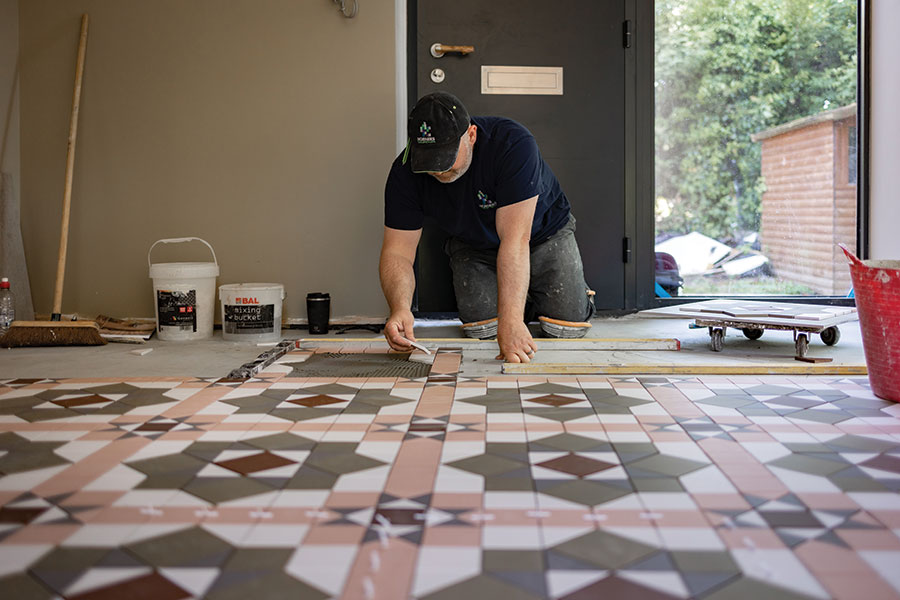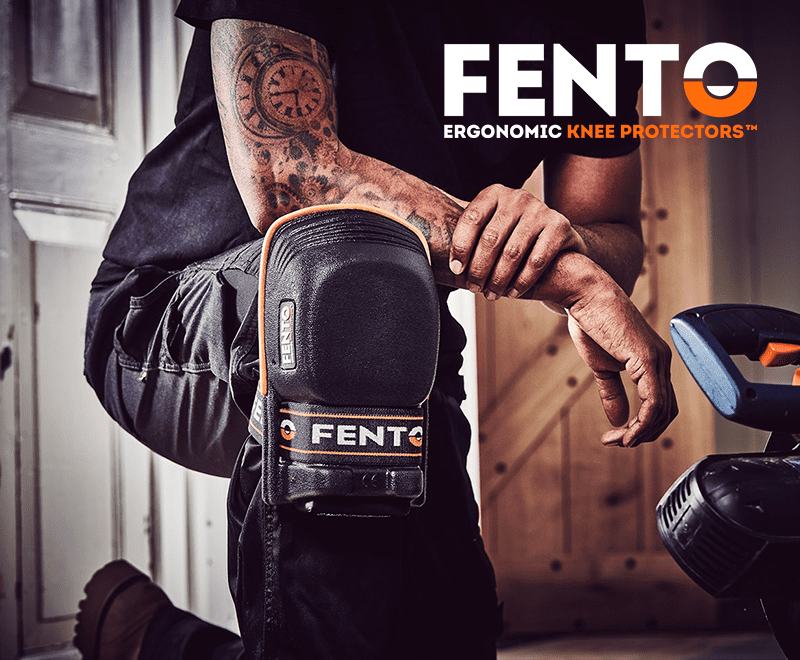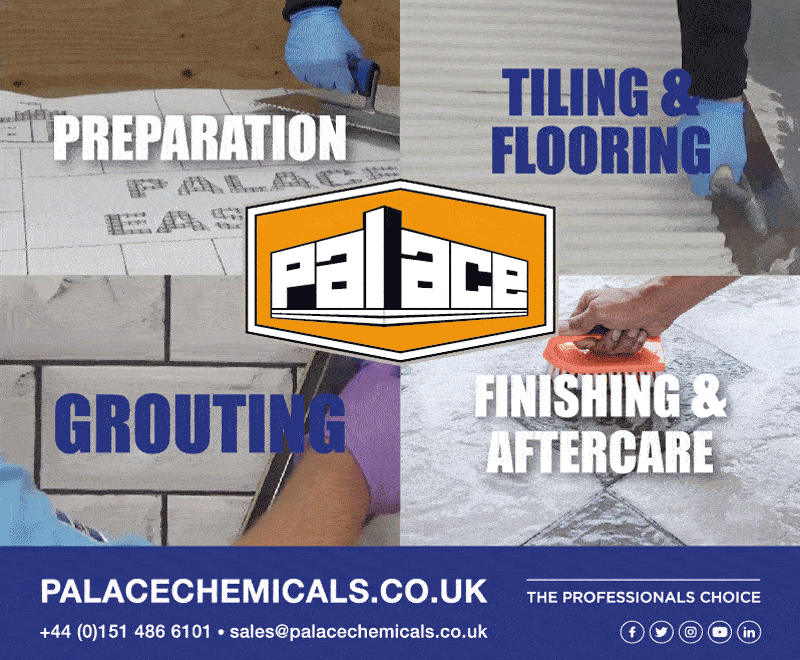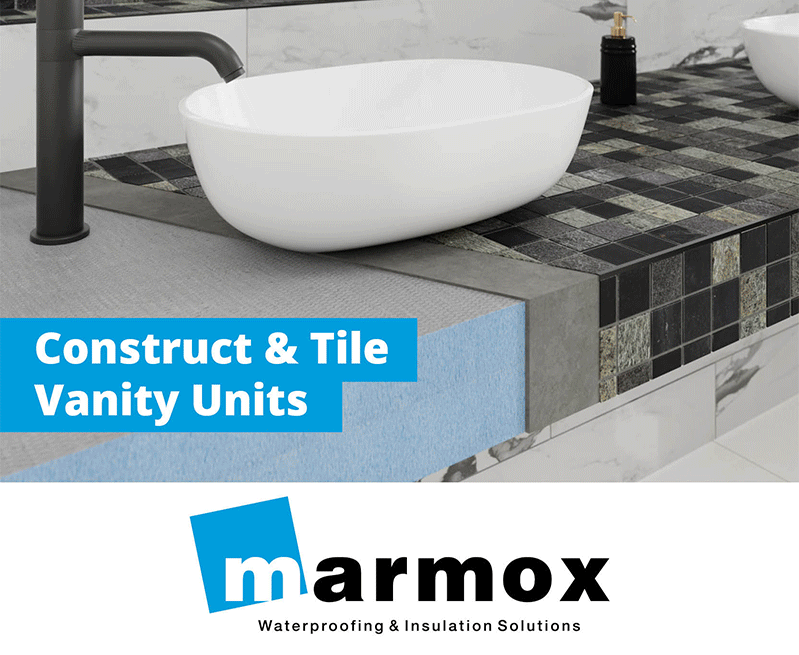‘It’s all about spatial awareness, setting out patterns, and precision’
HORNERS Tiling Specialists are based in Yorkshire. The company carries out many tiling installation projects around the area, mainly projects in residential and private houses as well as also being contracted by house builders that have sites ranging from 10-200 houses. They’ve also completed projects in sports centres, schools, restaurants, bars and cafes. However, over the years, the company has developed a talent for creating Victorian styled tiling projects. In this feature, TSJ interviews professional Mickey Horner, owner of Horners Tiling Specialists in an exclusive interview where he elaborates on his speciality of installing Victorian tiles and his projects.
Can you tell us a bit about your journey into tiling and how you came to specialise in Victorian-style tiling?
My introduction to Victorian tiling is a bit unusual. The tiling business was founded by my dad, but it wasn’t something I originally wanted to get into, even though my brother and I always helped in the school holidays. I went to university in Leeds to study Sport Science, and I played rugby at a high level. When I left university, I found it was hard to get a job and it was a busy time for my dad, so he suggested I work for him full-time. I thought it was going to be a temporary job, but I found myself really enjoying the practical side of it and learning how to do it.
When I first started, the company worked in the new housing sector and we were contracted by all the national house building companies – it was a proper family business. My mum did the admin while my dad ran the business, and I did a bit of both. My dad retired in 2006/2007, and I took it over gradually. Horners Tiling Specialists was incorporated in 2009 where it officially became mine, and at the time many companies were going bust because of the crash in 2008.
How were you introduced into the Victorian types of tiling?
We used to tile for a restaurant fitout company called Andy Thornton. They’re still around today but at the time, they were handling contracts for restaurants, which they don’t do anymore. Their projects were normally old fashioned yet traditional.
We’d usually do the standard tiling projects for them in the toilets, but they started to ask us to create bar aprons in a mahogany panelling. At the front of the bar, they’d ask us to create a checkerboard pattern with a border which was my first taste of Victorian-style work. It was more intricate than the usual jobs we did, however, it wasn’t overly complicated, and I found I really enjoyed it.
Andy Thornton started to take on contracts in Gothenburg, Sweden, where the gothic architecture lent itself to that vintage look. They were sending contractors over from the UK because, believe it or not, it was cheaper than hiring local Norwegian or Swedish contractors.
When we received our first job in Sweden, they sent me a design of a bar apron they wanted, and it looked more detailed. I assumed that all the different patterns were on one tile, and we were expected to lay printed patterned tiles out to create the desired design, however, when I arrived on the scene, there must have been a thousand boxes and in each box, were tiny different shapes, almost like mosaic pieces. I thought, ‘What on earth is this?’ But we were in Sweden, and there was no option to walk away. It was very much sink or swim.
Once we got our heads around it, I realised I had a knack for it, and it was the first big installation project we did in terms of Victorian tiling. It’s all about spatial awareness, setting out patterns, and precision. I loved the challenge. Interestingly, the tiler working with me at the time, who had decades of experience, hated it. And that’s when I realised tiling is really ‘horses for courses.’ Some people love the speed of large-format tiles, whereas others enjoy the intricacy and patience of the Victorian style. I naturally gravitated towards the latter.
From there, the Victorian installation side of the business grew, and I developed a strong relationship with Original Style, the tile manufacturer. They sell directly to customers through their showrooms, which often attracts homeowners looking for something special – an intricate hallway design or a statement pathway.
I took the initiative to visit my local Original Style shop, introduce myself, and put myself forward as a recommended installer. That way, if a customer came in with a project that required more complex setting-out or detailed patterns, the staff could pass on my details. It was a simple move, but it opened the door to exactly the kind of work I wanted to be doing.
Victorian tiling is very much a niche, and it’s certainly not the cheapest option. When I’m speaking with customers, I always present it as an investment – because the right tiling can completely transform the character of a house.
That said, it’s not something I do full-time. On average, I take on around three Victorian projects a month. The demand isn’t huge, but when it comes along, I really enjoy carrying out the project.
What drew you to this style, and what do you love most about working with it?
I find it therapeutic and many of the patterns are repeating. You’ll set up a little area and create a panel by fixing them in a certain way and then you move onto the next one. It’s crazy how quickly the time files.
By the end of the day, you step back and see this intricate design coming together, like a giant jigsaw puzzle, and that’s incredibly rewarding. What makes it even better is the reaction from customers. On large housing sites you rarely get that personal feedback, but with Victorian tiling, homeowners often go out of their way to tell you how much they love it. That appreciation adds an extra layer of satisfaction to the work.
How long have you been working with Victorian tiles, and what changes have you seen in the industry over time?
I’ve been working with Victorian tiling for over 15 years, and the trade has changed enormously in that time. I often say, ‘variety is the spice of life,’ because I don’t think there’s another trade with quite as much diversity. As tilers we work across so many different sizes, colours, patterns, and techniques – it’s become a broad skillset.
We’re now seeing tiles that are literally floor-to-ceiling in size, which wasn’t around when I started. There’s also incredible resin work coming through, and even sinks being made from tiles. The craftsmanship in the industry today is unbelievable.
When it comes to Victorian tiling specifically, there’s been a real renaissance. For a while the market was dominated by very plain, neutral shades, but designers have driven a resurgence of colour and pattern. Often, people renovating older houses will pull up a carpet and find an original tiled floor. That inspires them to restore it – and it also inspires others, who don’t have that history underfoot, to want an imitation of that Victorian character in their own homes. That’s where companies like London Mosaic and Original Style have played a huge role, making Victorian tiling accessible and aspirational.
Clients approach it in different ways. Some are unsure about committing to bold colours, so we suggest starting with classic black-and-white because it’s timeless, never goes out of fashion, and it gives them flexibility to change the wall colours around it. Others take the opposite route and go bold, with designs in spring greens or carnation pinks that make a real statement. Both approaches work, it’s all about whether you want to play it safe or inject a bit of personality into your home.
What makes Victorian tiling different from other styles in terms of technique and preparation?
The biggest difference is the time it takes to set out on the floor. It’s very time consuming which some tilers find frustrating. Take a standard hallway, maybe a metre wide. With modern tiles, you might only be working with three tiles across that space. With Victorian tiling, you could easily be dealing with 60 separate pieces. Every section must be carefully set out to suit the shape of the hallway. Without getting too technical, many of the older houses don’t have parallel walls, so you have to find a centre point and work with the staircase and make sure the design runs straight and true as you walk into the space.
Setting out is the key and that’s what sets the ‘fear factor’ with tilers that haven’t done it before – they’re not sure where to start.
In many ways, the principles of normal tiling are the same as Victorian tiling – you want to make sure everything is straight and square as you walk in and they’re visually central. But with Victorian work, there’s much more visualising, measuring, checking, and even dry-laying tiles first to make sure the layout works before fixing. The setting out process takes time but it’s a crucial part of the job and time needs to be spent on it because if you get that wrong, it’s a costly mistake.
In terms of floor preparation, it’s the same as normal tiling – make sure the surface you’re tiling onto is strong and solid and able to support the tiles and ensure there’s no movement if it’s a timber floor. On timber floors, you often need to reinforce with backer boards to create a rigid base.
Are there any specific tools or materials you use that are unique to Victorian projects?
I tend to use long levels or long straightedges to tile up against, which guarantees everything runs straight. Many tilers now use lasers on floors – and I do too – but with lasers you can sometimes be out by half a millimetre, whereas a solid straightedge gives you absolute accuracy.
When working with mosaics, I’ll also switch to a slightly narrower notched trowel to give me better control over the adhesive bed. But beyond that, the toolkit isn’t dramatically different – it’s more about how precisely you use it. The fundamentals are the same, Victorian tiling just demands a bit more patience and care with the set-up.
What are the biggest technical challenges involved in Victorian tiling work?
Sometimes in older houses, the flooring needs quite a lot of preparation. This is where you’ve got old rotten floorboards or broken up old cement floors, so you have to restore them. Making sure they’re prepped properly can be tricky.
Then there’s the layout itself. Navigating the patterns around doorways and fitting them into awkward-shaped hallways is where the real skill lies. You have to give yourself plenty of time for setting out, and just as much time at the other end for cleaning, sealing, and grouting. With Victorian projects, you can easily spend a full day just on grouting and cleaning before sealing the tiles.
The process itself has its own rhythm. For example, if I’m working on a checkerboard floor, I’ll lay the main pattern first, then cover it up while I work on the border. The border is always the last thing to go in, it frames the design and finishes it off. It’s all about patience, planning, and not cutting corners.
What’s the process like when you’re restoring original Victorian tiling?
To be honest, restoration isn’t an area I’ve specialised in. My focus has always been on brand-new installations. Part of the reason is that once you start taking out old material, you’re faced with the challenge of patching it back in with new tiles and making it blend seamlessly. That’s a skill, and while some tilers do it brilliantly, it’s not something I’ve gone into.
What I have done is cleaning and reviving existing floors, which is relatively straightforward. There are some excellent products available that will strip away decades of built-up grime and bring a floor back to life without the need for major restoration.
Have you been involved in any particularly memorable projects?
A few come to mind. One of the most memorable was at Wentworth Castle Conservatory near Barnsley. They’d received a grant to refurbish the conservatory, including the tiled floor, which was made up of thousands of tiny beige and brown triangles. Unfortunately, much of the original floor had been damaged where the old concrete base had deteriorated, so the job involved extending and rebuilding large areas. I completely underpriced it – we ended up laying around 9,000 individual triangles over nine weeks. It was a real challenge, but once it was finished the space looked incredible, and it was lovely to see it being used for weddings and events. Sadly, I believe the funding has since been pulled and the building has fallen back into disrepair, but I’ll never forget that project.
The first job I did in Sweden will also always stand out. It was a huge challenge at the time, especially being my first Victorian project of that scale.
Another that sticks with me was in Sheffield, where we tiled a very large hallway in one of the most intricate patterns I’ve ever worked with – rich reds, whites, blues, and black, complete with a detailed border. We also installed underfloor heating beneath it which added to the challenge.
What type of clients typically approaches you for Victorian tiling work?
My clients are 90% female. They tend to be more design orientated. People like that are really into their houses and want something different to stand out and create a feature in their homes.
Do you do any work for any celebrities?
Yes but not Victorian tiling. I worked on Holly Willoughby’s house a couple of years ago. There’s was a contractor we know, who does swimming pools for celebrities all over the country and contracted us to do the surround by her outdoor swimming pool. She was going to have an intricate design in an entrance way, but they changed their minds and did something with mosaics.
What advice would you give to tilers looking to get into Victorian-style tiling?
The best advice I can give is to find a tiler who does Victorian tiling and volunteer to help them, because that’s the best way you’re going to learn. Just do it for free, because the amount of knowledge you get from that will pay dividends in the end. That will be the best way because they don’t teach it anywhere.
What’s next for you in your business – any exciting projects or directions you’re heading in?
I’m trying to raise awareness of Victorian tiling through social media but it’s a slow process however on the business side, we’ve got a few new customers this year. It ebbs and flows – sometimes it’s 90% new housing, 10% private domestic jobs, however this year, it’s 60% new housing 40% private customers which has been a nice change.
mickeytiler@aol.com
www.hornerstiling.com











